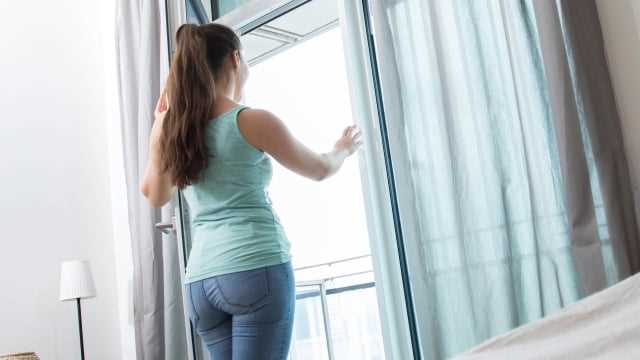Regular ventilation prevents the formation of mold in rooms and also helps to combat corona infections – and CO2 detectors can help with this. Stiftung Warentest tested 15 detectors for living spaces, including larger traffic lights that can record the air concentration in classrooms and large offices. but: The devices are not cheap. The cheapest well-rated detector costs 63 euros, a large traffic light for classrooms around 250 euros.
The Stiftung Warentest (issue 2/2022) gave eleven out of 15 devices for measuring the air in rooms the grade “good”.
A CO2 detector can do this:
They indicate when the air in a room is “used up”, i.e. it is no longer fresh. The devices remind you several times a day to open the windows. What ensured a good indoor climate in everyday life before Corona can now be decisive for health: Because frequent ventilation is one of the important measures to protect against the transmission of a corona infection within rooms.
CO2 detectors do not detect viruses in the air. They measure levels of carbon dioxide (CO2), a colorless and odorless gas that we breathe out. And with the air we breathe, aerosols from our lungs get into the room, which can transport viruses. The CO2 detectors are therefore an indicator of when the windows and doors should be opened at the latest, especially on cold winter days when frequent airing becomes uncomfortable.
In normal times, with a view purely to the good living climate, this is gradually the case with a value of over 1000 ppm (parts per million), at the latest at 1400 ppm ventilation should take place. During the pandemic, however, it is better to ensure air exchange from 800 ppm, according to the Stiftung Warentest with reference to the expert Konstantinos Stergiaropoulos, professor of heating and ventilation technology at the University of Stuttgart.
This is a shortcoming: The threshold values are not adjustable on all devices. This means that the well-rated devices only switch to the warning color yellow from the 1000 ppm range and even later to red. However, the majority of the tested devices also show the measured values on the display, which you therefore have to consciously pay attention to.
However, the testers were not always satisfied with the displays and warning colors: Not all CO2 traffic lights and measuring devices show red at a CO2 concentration of 1400 ppm in the room, but only react later, according to the magazine “test”.
How to ventilate properly
The quickest way to exchange stale air for fresh air is to ventilate intermittently and crossways. Because wide open windows, which are opposite if possible, create an air suction. Constant ventilation through tilted windows is inefficient because only little air is exchanged – even if you leave the windows in the tilted position for a long time.
A panel of experts from the Federal Environment Agency advises to ventilate normal living spaces for an average of 10 to 15 minutes per unit to protect against infection. In winter, 5 minutes can be enough if there is a big difference between the cold outside air and the heated inside air, in summer it should be around 20 to 30 minutes. If there are many visitors in the room, the room should be ventilated the entire time.
